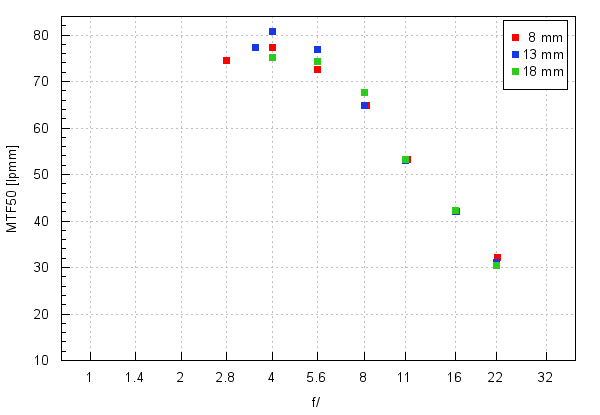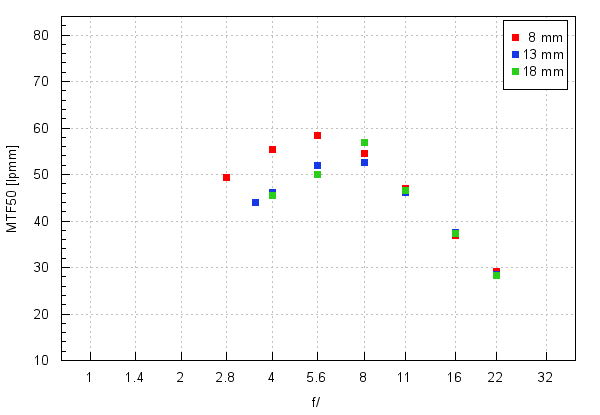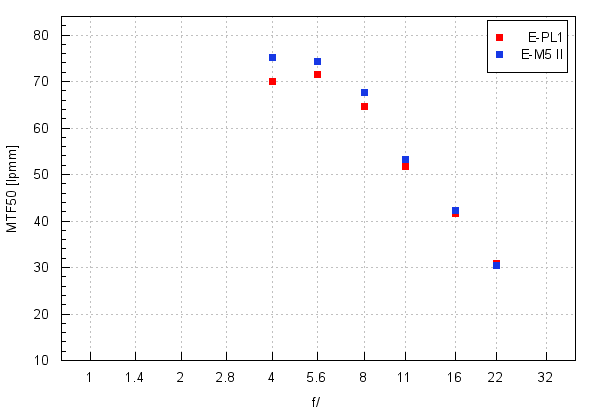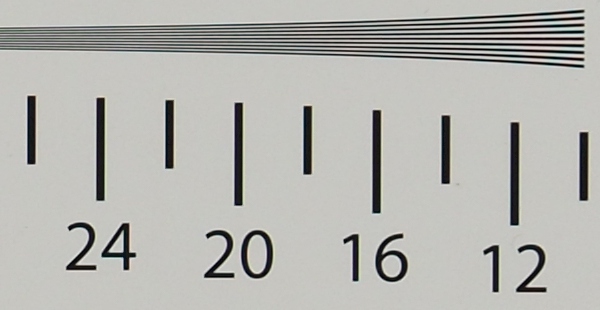Panasonic Leica DG Vario-Elmarit 8-18 mm f/2.8-4 ASPH.
4. Image resolution
In the case of the tests based on the O-MD E-M5 Mark II the best fixed-focal lenses can reach a level of 80-85 lpmm and the decency borderline we situated near 47-49 lpmm. Of course, with enlarging our database of tests performed with the help of the new body, these value can change slightly but even now we feel they allow us to deliver a solid, repetitive assessment.
Let’s check how the Panaleica compares in the frame centre at 8, 13, and 18 mm focal lengths.
Please Support UsIf you enjoy our reviews and articles, and you want us to continue our work please, support our website by donating through PayPal. The funds are going to be used for paying our editorial team, renting servers, and equipping our testing studio; only that way we will be able to continue providing you interesting content for free. |
- - - - - - - - - - - - - - - - - - - - - - - - - - - - - - - - - - - - - - - - - - - - - - - -

For a zoom lens the results make for some impressive reading. The middle of the focal lengths range is performing the best – on slight stopping down the aperture you find yourself over 80 lpmm and it’s a value worth a good prime. Both ends of the focal lengths range are not especially weaker, mind you, so at every focal length and at every aperture value from the maximum relative aperture up to f/8.0 you can get images of very good or even excellent quality. While stopping down to f/11 or further images become strongly limited by diffraction but it is due not to a fault of the lens, just laws of physics.
Now let’s check the performance of the lens on the edge of the frame.

This time the shortest focal length is actually the best. It is a good piece of news because in this type of instrument we care mainly about the widest angle of view and a balanced image quality across the frame. Longer focal lengths fare weaker, unfortunately; some of them are so weak that you can’t talk about full usefulness of images near the maximum relative aperture. In order to achieve that much you have to stop the aperture down to about f/4.5-5.0.
In order to be sure the results presented above were correct and we understood them properly we compared MTFs reached at 18 mm from the E-PL1 and the E-M5 Mark II. As you can see for yourself everything is in perfect accordance with our introductory remarks. The differences reach just several lpmm in the wide area close to the maximum relative aperture and they decrease to 0-2 lpmm on significant stopping down.

At the end of this chapter, traditionally, we present crops taken from photos of our resolution testing chart. These were taken from JPEG files saved along RAW files we used for the analysis above.
| Olympus E-M5 Mark II, JPEG, 8 mm f/2.8 |
 |
| Olympus E-M5 Mark II, JPEG, 13 mm, f/4.0 |
 |






